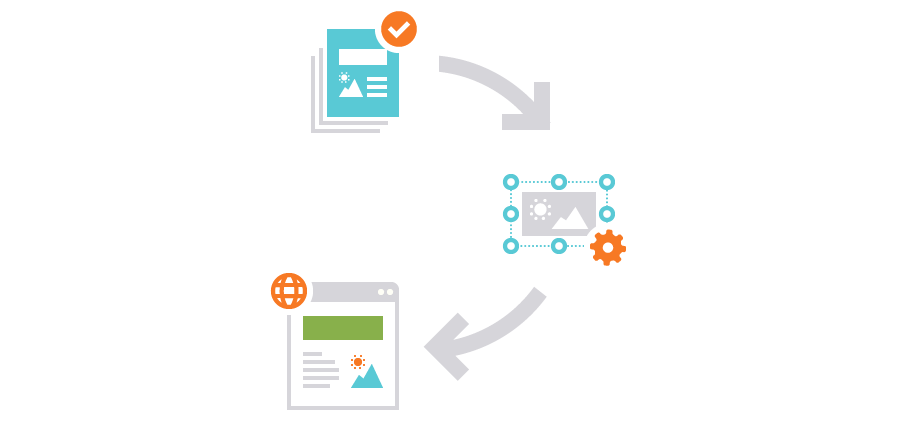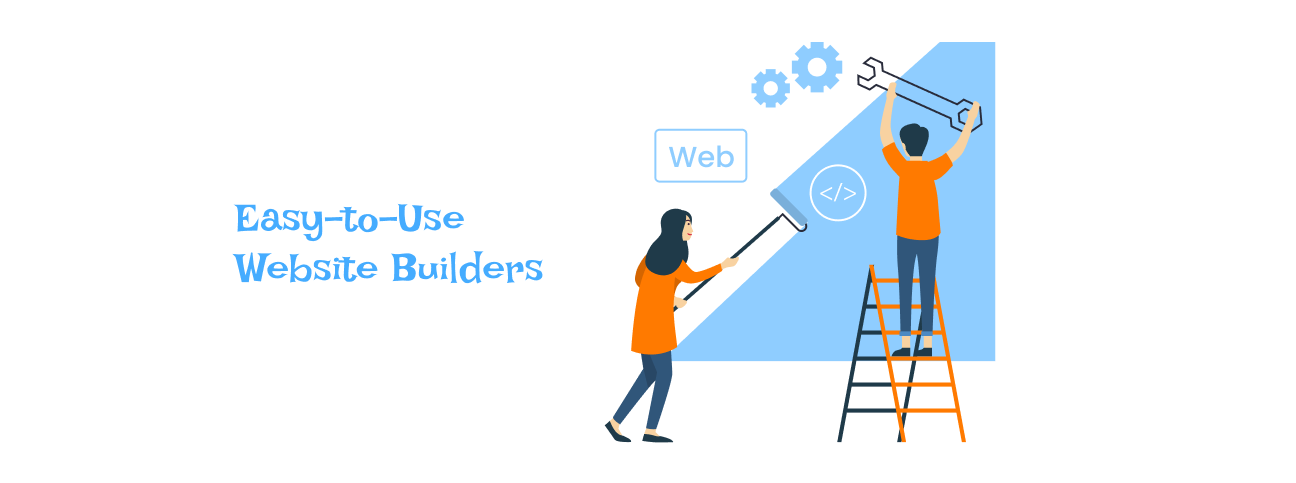Introduction to Website Builders: What They Are and Why You Need One
A website builder is a software tool or platform that allows individuals and businesses to create websites without needing to know how to code or design. With a website builder, you can choose from pre-made templates and designs, customize your site's appearance, add content, and publish your site online.
Website builders are becoming increasingly popular because they offer an affordable and easy-to-use alternative to hiring a professional web developer. Here are a few reasons why you might need a website builder:
1 - Cost-effectiveness:Building a website from scratch can be expensive, especially if you hire a web developer. A website builder allows you to create a professional-looking website without breaking the bank.
2 - User-friendly: Website builders are designed to be user-friendly, even for people with little to no technical knowledge. Most website builders use drag-and-drop interfaces, making it easy to add and arrange content on your site.
3 - Customization:Most website builders offer a wide range of templates and design options, so you can customize your website to fit your brand's unique look and feel.
4 - Speed: Building a website from scratch can take weeks or even months. With a website builder, you can have your website up and running in a matter of hours.
5 - Support:Most website builders offer customer support, so you can get help if you run into any problems or have questions about building your site.
Overall, a website builder is an excellent option for anyone who wants to create a professional-looking website quickly and affordably.
Features to Look for When Choosing a Website Builder

Here are some features to look for when choosing a website builder:
1 - Ease of use:Look for a website builder with an intuitive and easy-to-use interface.
2 - Design flexibility: Ensure the website builder has a range of templates and design options, so you can customize your site's look and feel to match your brand.
3 - Mobile responsiveness:Choose a website builder that automatically optimizes your site for mobile devices.
4 - eCommerce functionality:If you plan to sell products or services on your website, make sure the website builder has built-in eCommerce functionality.
5 - SEO tools:Look for a website builder that offers built-in SEO tools to help your site rank higher on search engines.
6 - Support and resources:Choose a website builder that offers customer support and helpful resources, such as tutorials and FAQs.
7 - Cost: Consider the cost of the website builder, including any ongoing fees or subscription costs.
By considering these features, you can choose a website builder that meets your needs and helps you create a professional and functional website.
Getting Started: Step-by-Step Guide to Building Your Website
Here's a step-by-step guide to building your website using a website builder:
1 - Choose a website builder: Research and choose a website builder that meets your needs and budget.
2 - Sign up and select a plan:Sign up for the website builder and choose a plan that fits your needs. Most website builders offer a free trial or a free plan.
3 - Select a template: Choose a template that matches your brand and style. Most website builders offer a wide range of templates to choose from.
4 - Customize your website:Use the website builder's tools to customize your website's design, layout, and content. Add images, text, and other elements to make your website unique.
5 - Add pages: Create pages for your website, such as an about page, a contact page, and a blog.
6 - Optimize for SEO: Use the website builder's SEO tools to optimize your site's content and metadata for search engines.
7 - Publish your site:Once you're happy with your site, publish it online. Most website builders make it easy to publish your site with just a few clicks.
8 - Test and refine: Test your site to make sure it's working correctly and refine it over time by adding new content and features.
By following these steps, you can create a professional-looking website that showcases your brand and provides value to your audience.
Customizing Your Website: Themes, Templates, and Design Options

Customizing your website is an important part of building a website that represents your brand and appeals to your audience. Here are some ways you can customize your website using themes, templates, and design options:
1 - Themes:Pre-designed website layouts that you can customize to fit your brand.
2 - Templates:Pre-built page designs that you can customize by adding your own content and design elements.
3 - Design options:Range of design elements, such as color schemes, font styles, and layout options.
4 - Branding: Use your brand's colors, fonts, and imagery to create a consistent look across your website.
5 - Images and media: Use high-quality images and media to add visual interest to your website.
Integrating Plugins and Tools for Enhanced Functionality
Integrating plugins and tools is an effective way to enhance your website's functionality and provide a better experience for your users. Here are some popular plugins and tools you can use to add functionality to your website:
1 - Contact forms: Use a contact form plugin to make it easy for visitors to get in touch with you.
2 - Social media sharing: Add social media sharing buttons to your website to encourage visitors to share your content on social media.
3 - Analytics: Use analytics tools, such as Google Analytics, to track your website's traffic and performance.
4 - SEO plugins: Use SEO plugins to optimize your website for search engines and improve your site's ranking.
5 - eCommerce plugins:Use eCommerce plugins to add online shopping functionality to your website.
6 - Live chat: Use a live chat tool to provide instant support to your visitors.
7 - Security plugins: Use security plugins to protect your website from malicious attacks and spam.
By integrating plugins and tools, you can add new features and functionality to your website without having to write any code. Look for plugins and tools that are compatible with your website builder and easy to use.
Search Engine Optimization (SEO): Tips for Optimizing Your Website

Search Engine Optimization (SEO) is the process of improving your website's visibility and ranking on search engines like Google. Here are some tips for optimizing your website:
- Research keywords: Identify and use keywords relevant to your target audience.
- Use descriptive titles and meta descriptions: Accurately reflect page content in titles and meta descriptions.
- Optimize page content: Use relevant keywords in headings, body copy, and image alt tags.
- Improve website speed: Optimize images, code, and use fast hosting provider.
- Build backlinks: Create valuable content to attract high-quality backlinks.
- Use internal linking: Connect your web pages for easy crawlability and structure.
- Monitor results: Use analytics to track traffic and ranking, make improvements.
Mobile Optimization: Ensuring Your Website Looks Great on Any Device
Mobile optimization is a crucial aspect of website design as more and more people use their smartphones and tablets to access the internet. To ensure that your website looks great and functions well on mobile devices, there are several tips you can follow. One important tip is to use a responsive design, which means that your website layout adapts to the size of the user's screen. This ensures that your website is easy to navigate and use on any device. Additionally, you can simplify your design by using clean and easy-to-read fonts, minimal text, and concise navigation. Optimizing your images by reducing their size without sacrificing quality is another important step in mobile optimization. You can also use mobile-friendly forms that are easy to fill out on a small screen. Testing your website on multiple devices is essential to ensure that it looks great and functions well on any screen size. Finally, minimizing page load times by optimizing images, using caching, and minimizing HTTP requests can help to improve user experience. By implementing these mobile optimization tips, you can attract more visitors to your website and provide them with a seamless browsing experience.
Launching Your Website: Best Practices for a Smooth Launch
Launching your website can be exciting, but it's important to follow best practices to ensure a smooth launch. Here are some tips:
1 - Test website thoroughly: Ensure website works on multiple devices and browsers.
2 - Check for broken links:: Scan the website for broken links and fix them.
3 - Check website speed: Test website speed for fast loading times.
4 - Set up analytics:Track website traffic and performance from the start.
5 - Set up backups: Set up automatic backups to prevent data loss.
6 - Optimize for SEO: Ensure the website is optimized for search engines.
7 - Create a launch plan: Plan marketing efforts and social media promotion.
Maintaining Your Website: Tips for Ongoing Maintenance and Updates

Maintaining your website is essential to keep it up-to-date, secure, and running smoothly. Here are some tips for ongoing maintenance and updates:
- Regularly update software and plugins: Keep your website up-to-date with the latest software and plugin updates to ensure security and performance.
- Back up your website regularly: Back up your website regularly to prevent data loss in case of any issues.
- Check for broken links and fix them: Use a tool to scan your website for broken links and fix them promptly.
- Monitor website speed and performance: Regularly check website speed and performance and make improvements if needed.
- Update website content: Keep your website fresh and engaging by regularly updating content and adding new pages.
- Monitor website security: Keep your website secure by regularly monitoring for any potential security threats.
- Regularly review website analytics: Review website analytics to understand user behavior and make data-driven decisions for improvements.
By following these tips for ongoing maintenance and updates, you can ensure that your website remains secure, up-to-date, and user-friendly, helping you achieve your business goals.
Conclusion: Why a Website Builder is the Perfect Solution for Your Online Presence
In conclusion, using a website builder is the perfect solution for creating and maintaining your online presence. With a website builder, you can easily create a professional-looking website without needing any coding skills. Website builders offer a range of features and customization options to help you create a website that meets your specific needs. Additionally, website builders make it easy to update and maintain your website over time, ensuring it remains secure and up-to-date. By using a website builder, you can establish a strong online presence, attract visitors, and achieve your business goals with ease.





